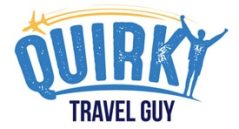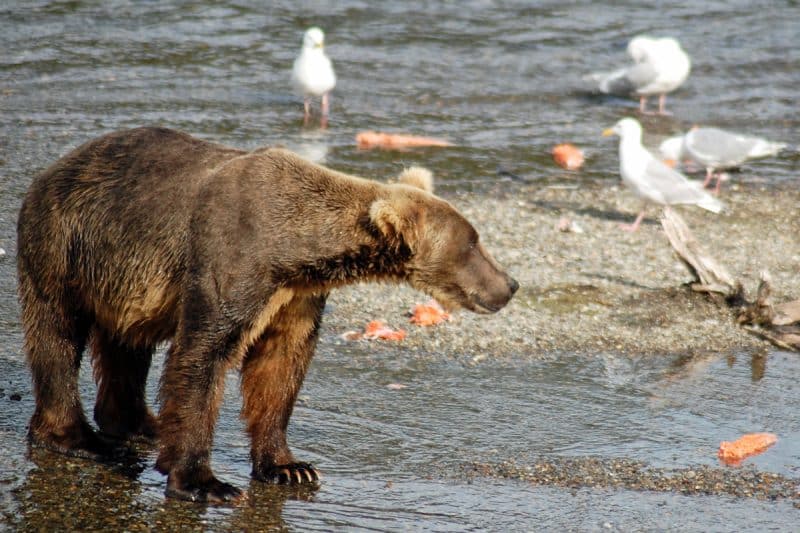Located in Lake Superior between Michigan and Minnesota, way up near the Canadian border, Isle Royale National Park is one of the more lesser-known but fascinating national parks in the U.S.
The 45-mile by 9-mile island offers great forest scenery, thousands of moose, kayaking opportunities, and some of the most remote camping experiences available in this part of the country.
Getting to Isle Royale can be a challenge since it’s way out in the lake. Typically, extensive planning is required, since you can only get there by plane or ferry, and the ferries can be booked well in advance.
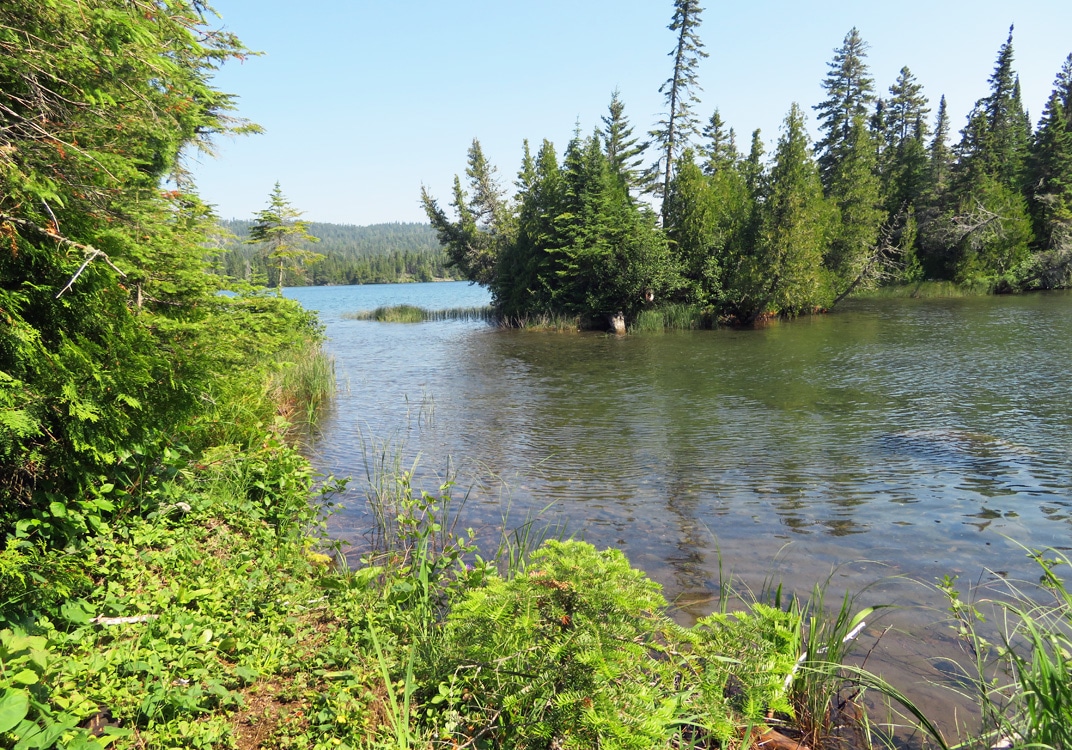
Which ferries are available, and how much do they cost? What are the best hiking trails and campgrounds on Isle Royale? How do you secure a campsite? Is there food for purchase? Do the famous wolves still live here? What are some popular things to do at Isle Royale? What hiking and trail maps are available?
Read on for answers to all of these questions and more in your complete visitors guide to Isle Royale National Park.
Isle Royale National Park: Maps and Basic Info
A few fun facts about Isle Royale before we dig into the specific details:
-It has the longest average-visit time (4.5 days) of any U.S. national park. That’s probably because it takes so much effort to get there that people want to stay and get their money’s worth.

-It’s the only national park to completely shut down in the winter. The island shuts down completely from November 1 to April 15. (The visitor center in Houghton, Michigan does remain open year-round on weekdays, in case you’re passing through in winter and want to get your national parks passport stamped.)
-With roughly 28,000 visitors per year, it ranks #4 on the list of least-visited national parks in America, behind only three remote Alaska parks.

-The island is composed of numerous ridges, the largest of which, Greenstone Ridge, is around 1000 feet high. Volcanic and sedimentary rocks make up much of the ground throughout the island.
RELATED READING: The World’s Longest Cave System: Inside the Wild World of Mammoth Cave National Park
-Isle Royale was heavily mined for copper in the 1800s, and some of those mine entrances are still visible on the island today. Loggers also deforested the island, but when it became a national park in 1940, these activities ceased.

Things to do at Isle Royale National Park
Chances are, you’ll be landing at Rock Harbor or Windigo. These are the two visitor centers in the park. The NPS fee for visiting Isle Royale is $7 per person, per day.
This fee is due upon arrival at the visitor center and is not included in your ferry fees. You must pay the fee to cover every day you will be on the island, including your day of arrival and day of departure.
What are some things to do at Isle Royale National Park? The obvious choices are hiking, camping, and canoeing or kayaking. Later in the article, we’ll talk in-depth about some of the 36 campgrounds in the park and some popular hiking trails.
Things to do: Canoeing and kayaking
Canoes and kayaks are available for rental at Rock Harbor campground. You can also bring your own on some of the ships for an additional fee.
This is a great way to see the park and get to some places that most visitors don’t see, like some of the small islands in the Rock Harbor area.

I rented a canoe at Rock Harbor and spent an hour or so paddling in Tobin Harbor. This is a popular spot for paddling because the water tends to be quieter than that of Lake Superior. The views were fantastic.

Canoe rental fees were around $20 for a half-day rental. Kayakas were over $30 for a half-day rental. Just be careful about going too far down the harbor, because the paddle back against the wind can be brutal.
The guy at the rental place suggested a canoe would be easier to paddle than a kayak, but this was very much not the case. The huge canoe was way too difficult to manage and I never felt safe paddling very far because I always felt like I was going to tip over.
If I had to do it again, I definitely would have gone with a kayak. So many pretty kayaks to choose from!
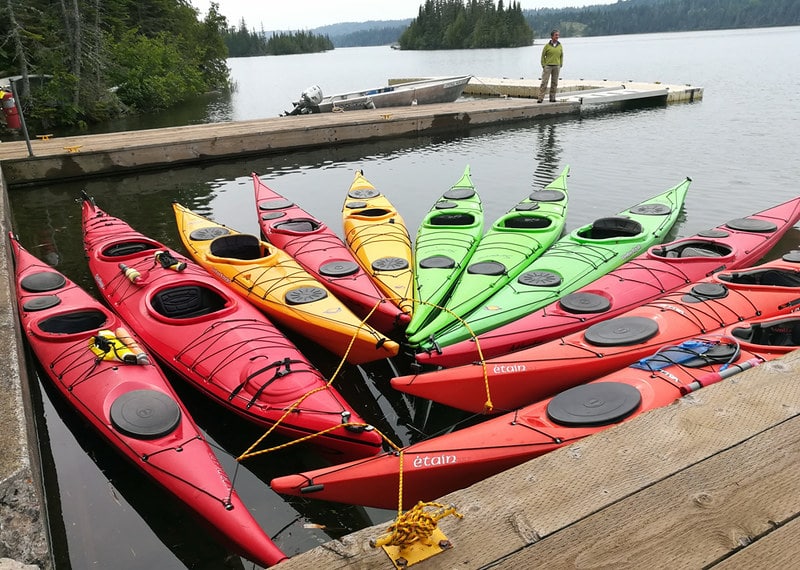
Kayaking and canoeing are great solo activities. That’s one of the reasons why Isle Royale makes our list of the best national parks to visit alone.
Things to do: Viewing old mine entrances
Some of the defunct copper mines around the island can be seen on hikes or short strolls. Check out the official NPS park map to see some of the mine sites, such as Wendigo and Island on the west, Pittsburg and Minong in the north, and Siskowit and Smithwick in the east.

I took a short walk to see Smithwick Mine, located east of Rock Harbor. There wasn’t a ton to see, but it was interesting to visit the opening of a former mine where copper was excavated nearly two centuries ago. That big hole in the ground carries a lot of history!

Curiously, recent evidence suggests that Native Americans may have mined the island for copper as long as 6000 years ago.
Other things to do: Fishing, scuba diving
Fishing is allowed in the park. Anyone wishing to fish in Lake Superior must obtain a state of Michigan fishing license. You can buy a license online at the Department of Natural Resources website. If you’re just planning to fish the inland lakes, no license is required.
Scuba diving is also permitted, but it can be challenging. Waters are cold and visibility can be poor. But there are several shipwrecks to explore if you’re so inclined.
How to Get to Isle Royale: Ferry Information
Unless you’re one of the rare visitors arriving by private boat (congrats) or floatplane (super-expensive), you’ll be taking one of four ferries to Isle Royale.
Make your reservations in advance because the ferries do sell out in advance during the peak summer months.
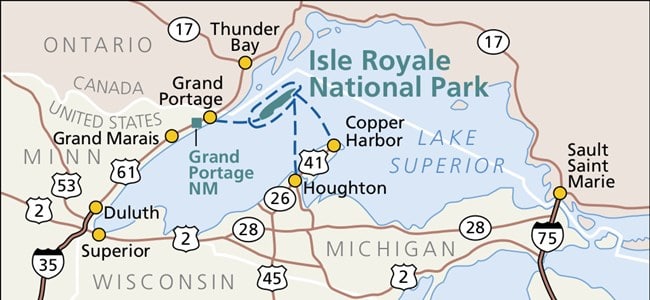
The ferries run from different cities and land on different parts of the island, so you’ll need to decide which part of Isle Royale you want to see and where you want to depart from. These are your options:
Ranger III (Houghton, Michigan)
From Houghton, located mid-way out on Michigan’s Upper Peninsula, you can board the Ranger III. This ship carries 128 passengers to Rock Harbor, on the eastern side of Isle Royale. It operates from late May through early September.
Currently, Ranger III fees are $160 roundtrip ($80 each way) for adults. There used to be discounted prices outside of the peak summer season, but that is no longer the case, as of 2024. Children are now charged $40 each way, while infants less than a year old are free.

The ferry travels to Rock Harbor from Houghton at 9 am twice a week (Tuesday and Friday) and returns at 9 am twice a week (Wednesday and Saturday.) It’s operated by the National Park Service and offers free vehicle parking in Houghton.
Queen IV (Copper Harbor, Michigan)
Located way on the tip of Michigan’s Upper Peninsula is the town of Copper Harbor. From here you can board the Queen IV, which also lands in Rock Harbor, on the eastern side of Isle Royale. It operates from early May to late September.

The Queen IV is one of the few options for day trips to Isle Royale. You can take the ferry there in the morning and return in the afternoon, giving yourself 3.5 hours in the park. Of course, you can stay for multiple days as well.
As of 2024, the cost is $160 round-trip ($80 each way) and the journey is about 3 hours. Kids under 15 are charged $115 for the round-trip. There’s an extra $60 charge for kayaks, canoes, and bikes.
The Queen IV travels everyday between late July and early September. Service is six days a week for most of July and five days a week for most of June. During May and the rest of September, the ship only travels on Monday and Friday. See the Queen IV website for specific travel dates.
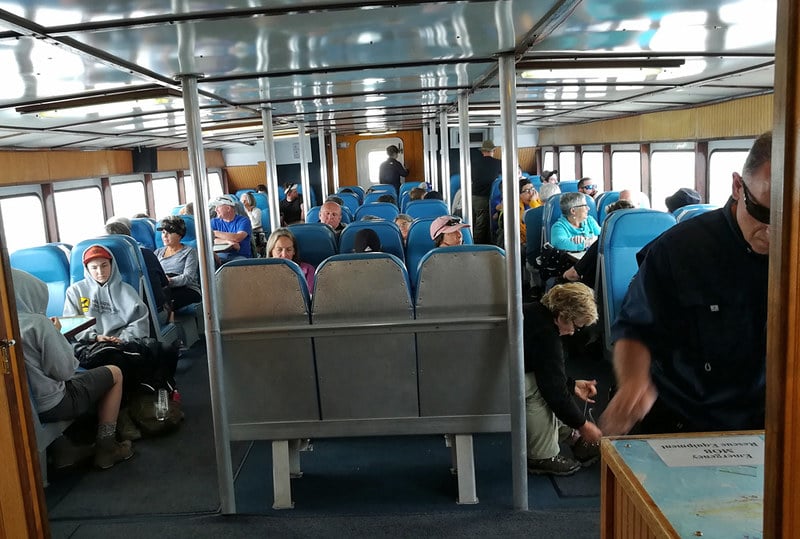
Note that you’ll need to stay in Copper Harbor overnight to be at the dock ready for the Queen IV’s 8 am departure. Lodging in Copper Harbor can be quite expensive unless you tent camp at Fort Wilkins State Park. And you’ll need to leave your car somewhere. Parking is $10 per night per vehicle in the ferry’s private lot.
Aside: Upon leaving Isle Royale, I drove west on the peninsula and ended up staying at a strange old roadside motels I’ve encountered!
Voyageur II and Seahunter III (Grand Portage, Minnesota)
The other starting point to get to Isle Royale is Grand Portage, Minnesota, a town just six miles from the Canadian border. Parking is available for ferry passengers at $4 per day.
Both the Voyageur and the Seahunter make stops at multiple spots on Isle Royale, so if you want to see different places in the park, you can book a trip with them. You can take the ship from Minnesota to Windigo Visitor Center on the western edge of the island, then a couple days later, take the ship from Windigo to Rock Harbor Visitor Center on the eastern end of the isle.
Round-trip cost from Grand Portage, Minnesota to the park ranges from $180 to $226 on these ships. Prices vary depending on which Isle Royale destination you’ll be getting off.
Camping in Isle Royale National Park

The only real lodging in the park is Rock Harbor Lodge, which has 60 four-person rooms and 20 cottages available. Most everyone else who visits Isle Royale will tent camp.
The important thing to know about camping at Isle Royale is that tent sites are NOT reservable (unless you have a group of 7 or more, in which case you’ll want to make a group camping reservation.)
When you arrive at the island, check in at the visitor center and pay your daily visit fees. At that time, you also inform the rangers which campgrounds you will be staying at during your time on the island.

A majority of Isle Royale’s campgrounds have only 3-6 individual tent sites each, so it’s entirely possible that when you give the ranger your planned itinerary, you will be asked to make changes if your desired campsites are full.
Be prepared with a backup plan. Some campgrounds have wooden shelters that are also available for campers.
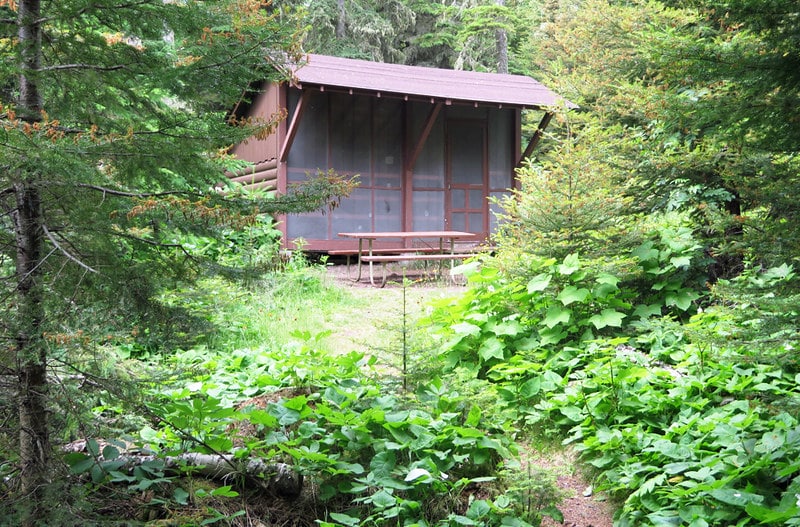
Pro tip: If you want to give yourself the best shot at getting the campgrounds you really want, be sure to get in line first at the visitor center. Note that when your ferry arrives, you’ll first have to stop and listen to a speech from an NPS ranger. So while that is going on, have your bags close and be ready to run inside the visitor center ASAP as soon as she’s done speaking.
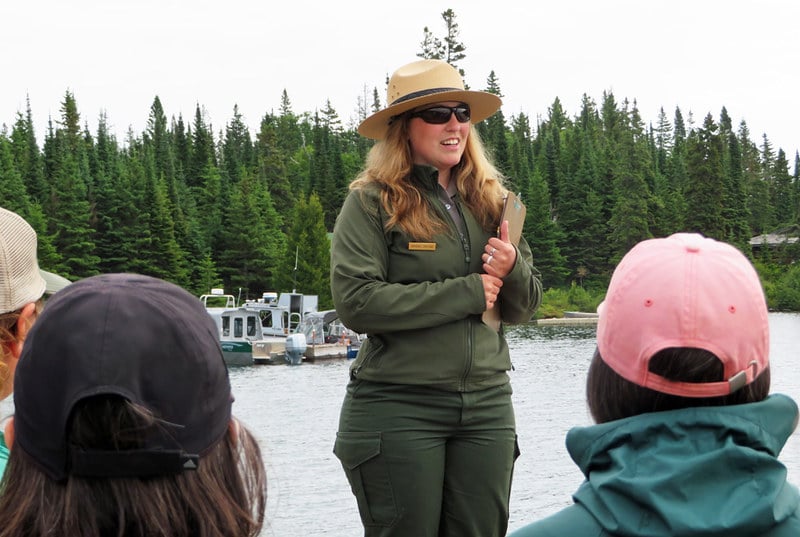
Most campgrounds, especially those near the visitor centers, have strict limits on how many days you can stay. For some, the limit is just 1 or 2 days. That means that if you plan to stay on Isle Royale for a week, you’ll have to plan to do some hiking and moving between sites. Campgrounds can be anywhere from 2-10 miles apart.
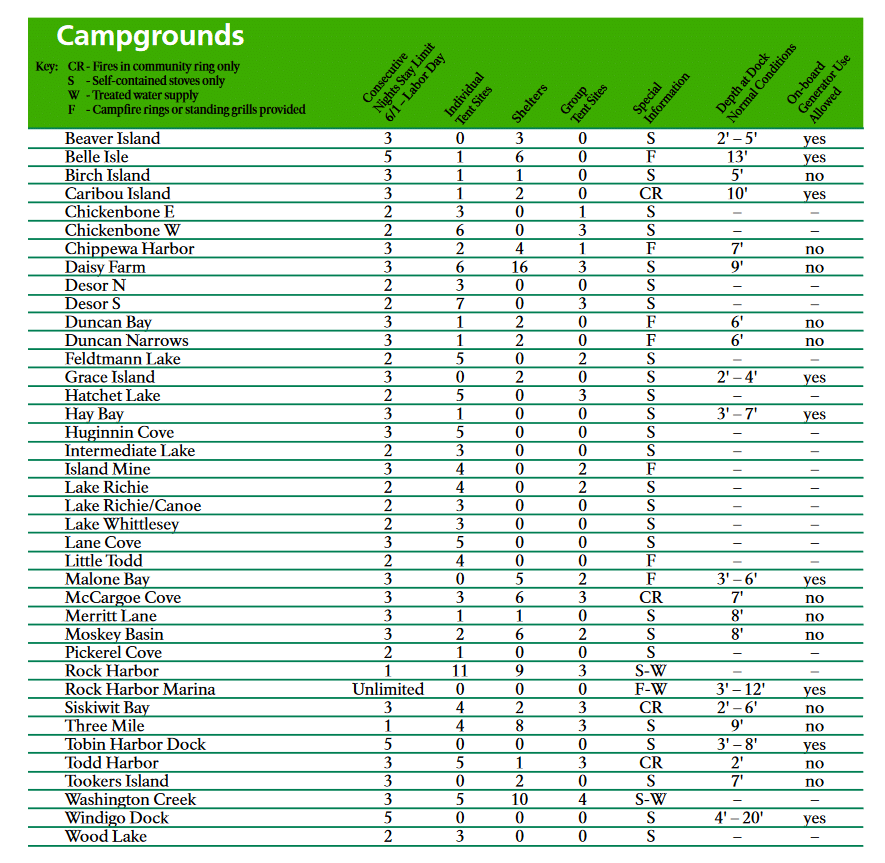
All campgrounds have outhouses and a water source (though the water is not drinkable.) There are no garbage cans in campgrounds, since all garbage on the island must be removed by ship. So campers are responsible for packing out all of their own trash.
I spent two nights at Rock Harbor campground and two nights at Three Mile, both of which are situated near the lake and offer good views.
The 2.7-mile walk between campgrounds was a bit rough because I had overloaded my pack. You’ll thank yourself later if you carry as light of a load as possible.
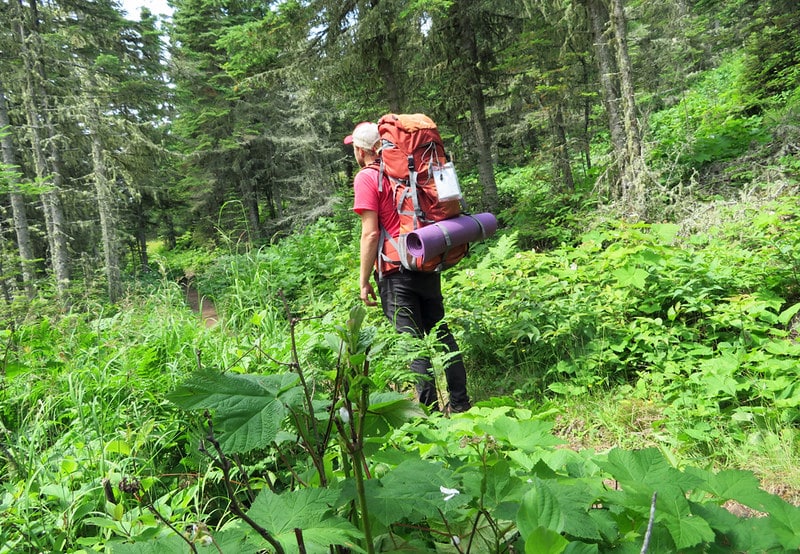
Backcountry camping is possible – check with the rangers in advance to get a permit. Laundry and showers are available seasonally at both visitor centers.

Eating and cooking on the island
Fires are not permitted at most campgrounds, so you should plan your meals accordingly. For my four days on the island, I brought a lot of plain foods edible at room temperature, like granola bars, apples, beef jerky, and baby carrots.
Camp stoves are allowed. The NPS includes a list of campgrounds that currently permit fires in its Greenstone Newspaper – click to see the latest edition.
There is a small camp store at Rock Harbor that sells snacks and basic meal staples should you need them. The Windigo side also has a store with cold sandwiches and snacks.

In addition, there’s a gift shop at Rock Harbor Lodge that sells groceries, and the dining room at the lodge serves breakfast, lunch, and dinner.
Hiking in the national park
Isle Royale National Park contains 165 miles of hiking trails, so there are endless opportunities to see nature by foot. If you’re switching campgrounds at any point during your stay, you’ll be hiking at least a few miles to make the move.

There isn’t a separate map of hiking trails on Isle Royale. Just use the general park map to see the hiking opportunities.
Potential hiking highlights include Lookout Louise, Suzy’s Cave, Minong Mine, Mount Siskiwit, and Sugar Mountain.

If you’re really serious about hiking here, pick up a guide like the National Geographic Illustrated Trails Map. That will give you all the info you need to become an Isle Royale expert vagabond.
Walking can be arduous in some places, with rocks and tree roots on the trail. Some trails are difficult to follow because they aren’t well-marked.
I hiked from Three Mile Campground north towards Mount Franklin but didn’t quite make it the whole way. I only saw one other person during the entire hike – the interior parts of the island can provide a lot of solitude.

Wildlife opportunities: Moose and wolves
Only 19 types of mammals live on Isle Royale, since it’s too far (14 miles) from the mainland for most to swim or walk across the winter ice bridge (which due to climate change doesn’t even form anymore most years.)
Because of the semi-isolated nature of the island, Isle Royale is a great place to study the relationship between moose and wolves. In fact, it is the world’s longest such predator-prey study. The population of both wolves and moose have experienced spikes and sharp declines many times through the years.
Unfortunately, the number of wolves on the island decreased dramatically in recent years. As fewer wolves made the winter journey to the island, the ones remaining suffered from inbreeding. In 2008, there were only 23. By 2017, there were just two wolves remaining.
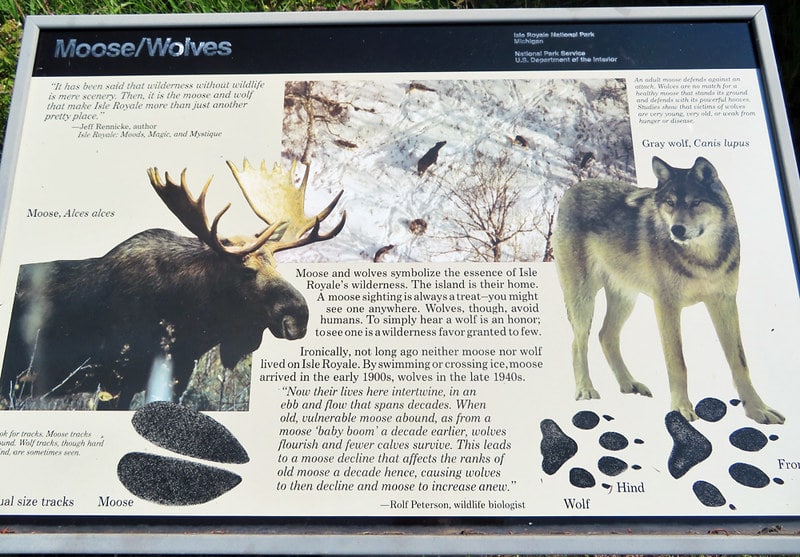
Officials considered letting the wolves perish and letting nature takes its course, but in 2018 they approved a plan to bring 20-30 wolves back to the island over 3-5 years. Soon enough, visitors will hopefully have opportunities to see wolves once again.
In 2018 and 2019, officials captured 19 wolves from mainland Michigan, Minnesota, and Ontario, and transferred them to Isle Royale. As of this writing, the NPS reported there were 14 wolves still alive on the island. Eight had not survived, most due to “intraspecific aggression,” a fancy way of saying they fought each other.
One wolf left the island on its own during the winter, when an ice bridge to the mainland formed. It was wearing a radio collar, so scientists were able to track its movements.
I was lucky enough to see two moose on Isle Royale at very close range. One morning while sitting inside my tent in Rock Harbor campground, I heard crashing of branches nearby and knew it had to be a moose since there are no bears here.
Sure enough, I peeked outside just in time to see a massive moose and a baby moose running past on a trail not 10 feet from my tent. What a cool experience!
What other wildlife can you find on Isle Royale National Park? Beyond fish and turtles, you’ll mostly see squirrels and small foxes. The red foxes are known for stealing shoes or anything else left outside your tent, so beware. Hares, mice, and bats also live here.
What should I bring to Isle Royale?
In addition to the obvious (tent, sleeping bag, food), bring a rain jacket and some warm clothes. “Spring” season here can extend into early July, so you’ll want to be prepared. Be sure to bring mosquito repellent. Bugs can get pretty bad during the summer months.
Is water available on Isle Royale?
Potable water is only available at Rock Harbor and Windigo, so bring plenty of your own.
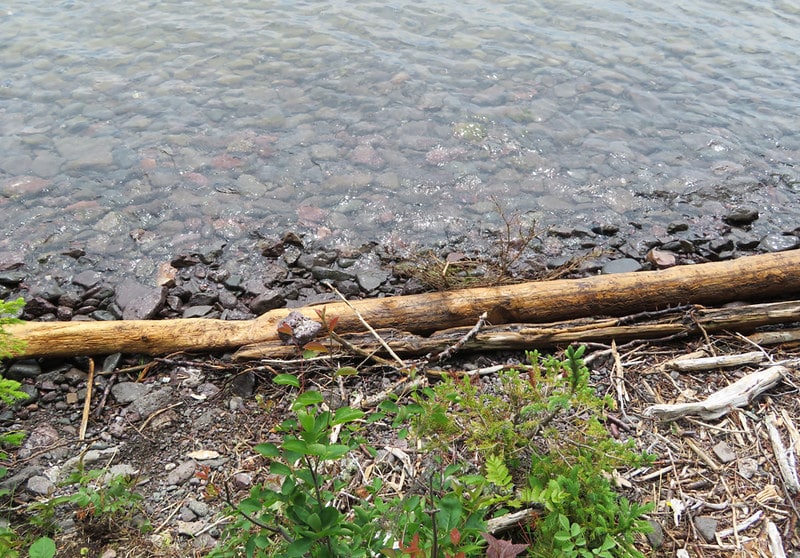
Is there wifi and cell phone service on Isle Royale National Park?
Nope! You may get a cell signal, but don’t expect one. (And it may be a Canadian signal, so check your foreign data allowances.) Limited wifi is available for guests of Rock Harbor Lodge.
But generally speaking, don’t expect to have a connection with the outside world while you’re here. Let go of Facebook, social media and email, and just enjoy your surroundings, the nature, and the beautiful surroundings!
Can I take a car to Isle Royale? Are there any roads on Isle Royale?
No and no. Ferries do not transport vehicles to the island, and there’s no need, since there are no roads anyway. Be prepared to move by foot.

How can I get around the island?
As noted earlier, you’ll mainly have to hike. Other options include kayaking and taking the Voyageur ship from one stop to another.
Additionally, Rock Harbor Lodge does offer water taxi and fishing charter service, as well as scheduled cruises to various points in the park, including some of the outer islands.
Are pets allowed?
No. To protect the wildlife ecosystem, pets of any kind are not permitted. The only exception is made for service animals, but you must get a permit in advance.

Would you visit a remote place like Isle Royale National Park?

